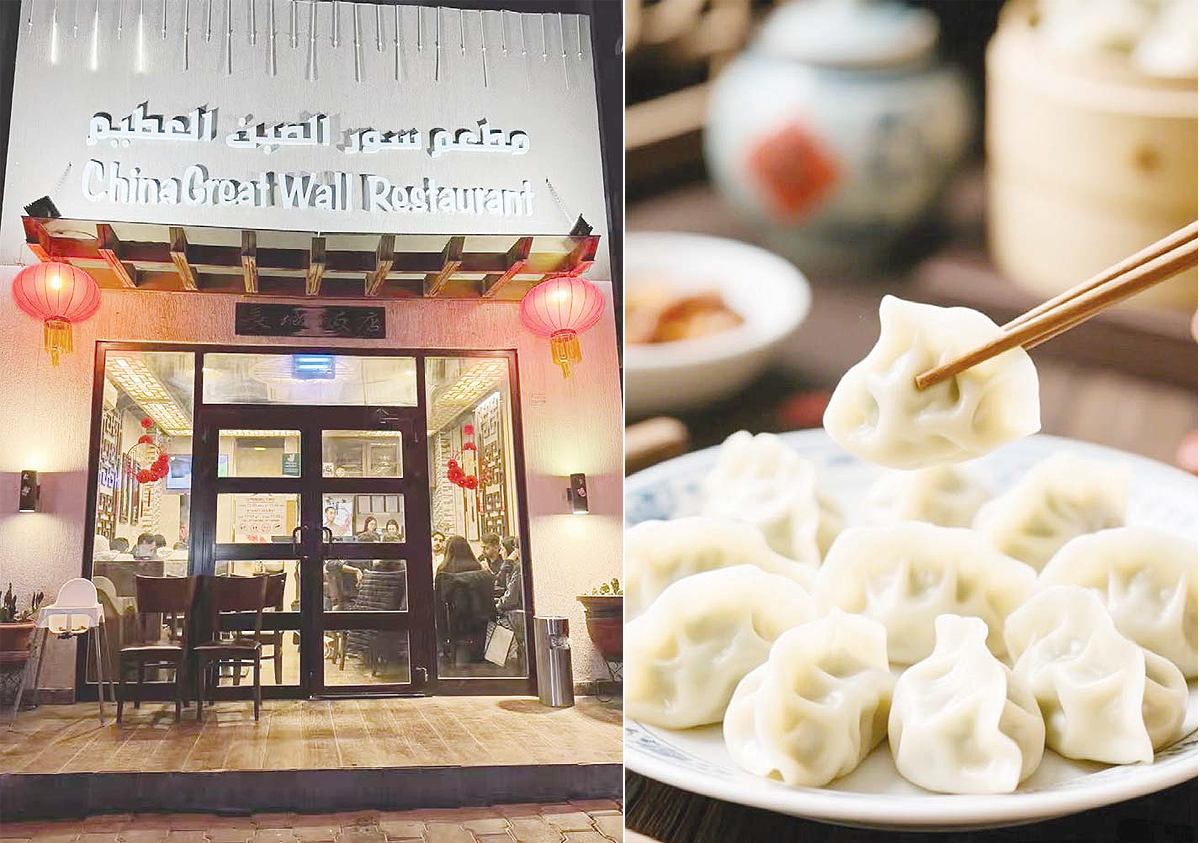28/08/2025
28/08/2025

Founded in 2003 in a small corner of Mahboula, China Queen Restaurant began as a humble eatery run by Chinese expatriates Jin Xiaobing and his partner, who, along with two chefs and a few helpers, brought the rich flavors of authentic Chinese cuisine to Kuwait. What started as a local favorite quickly grew in popularity, leading to the opening of a second branch in Salmiya and a rebranding as China Great Wall Restaurant — a name that reflects its strength, heritage, and enduring passion for serving timeless Chinese dishes that continue to win the hearts of its guests.
For Jin Haonan, manager of China Great Wall Restaurant, the story of the eatery is also the story of his family. His father began cooking at just 18 in Shenyang, China, and arrived in Kuwait in 2001 as a chef. Two years later, he and a partner opened a small restaurant to share authentic Chinese flavors with the local community — a dream that has since grown into a culinary landmark.
Today, the restaurant is best known for its Northeastern-style dumplings, with shrimp and chicken-cabbage fillings that remain customer favorites, served steamed or pan-fried. “Dumplings may look simple,” Jin says, “but they hold culture, tradition, and a lot of heart.” By sourcing halal-certified meats and fresh produce from local markets, the team balances authenticity with the diverse tastes of Kuwait’s multicultural diners — from lemon-accented soups for Arab guests to spicier dishes preferred by Chinese patrons.
Despite the daily challenges of running a small family business, Jin says the joy comes when customers return with smiles and kind words. “Knowing people enjoy our food,” he adds, “is the most rewarding part of this journey.”
Behind the Wok: Chat with the Chef Mr Yue of China Great Wall Restaurant
What’s the most technically difficult dish you prepare, and why?
Peking Duck (北京烤鸭 - Běijīng Kǎoyā): The difficulty here is in the multi-day, multi-step process. It requires:-Preparing the Skin: Air is pumped between the skin and meat to separate them.-Glazing: The duck is glazed with malt syrup.-Drying: It must be hung to dry in a specific environment for hours.-Roasting: It's roasted in a specialized closed oven, requiring the chef to constantly rotate it for even heat distribution to achieve supremely crispy skin and moist meat.
How do you maintain consistency in taste and quality when cooking for hundreds of guests every day?
Specialised team, diving tasks among our team members in the kitchen as well as our waitresses, to achieve the best service and result during busy hours in the restaurant.Consistency of food taste and quality relies on the years of experience and good communication between the restaurant owner and me
What ingredient or technique do you think is most misunderstood about Chinese cooking outside of China?
Many think achieving wok hei is simply about cooking over a blisteringly hot flame. The Reality: While intense heat is necessary, wok hei is the complex flavor and aroma imparted to food by the rapid, controlled combustion of oil and sauces in a well-seasoned wok at the precise moment of cooking.
Can you describe a time when a dish failed in the kitchen, and how you turned that experience into a lesson or a new creation?
From my experience, with instructions clearly given from the dining lobby, we do not often make mistakes. We will just ask our customers what they want and how they want it, to make the dish they want.
Many chefs talk about their “signature” — what defines your cooking style, and how do you want guests to remember your food?
I would say my signature lies within the China Great Wall restaurant, it is the taste of our restaurant.
Dumplings, or Jiaozi, date back over a thousand years to China’s Eastern Han Dynasty (AD 25–220). Legend credits physician Zhang Zhongjing with creating them by wrapping meat and herbs in dough to help villagers stay warm and healthy during winter. Over time, they became a cherished culinary tradition, symbolizing warmth, care, and prosperity — their shape resembling ancient gold ingots.
Today, dumplings are enjoyed worldwide: Gyoza in Japan and Korea, Ravioli and Tortellini in Italy, Pierogi in Poland, and Empanadas in Latin America. They are usually boiled or pan-fried, with fillings ranging from vegetables and cabbage to beef and seafood, and remain a staple during Chinese New Year and family gatherings.
Recipe of the day - Dumplings - Rating
- Roll out the dough into thin circles
- Chicken breast, washed and minced into a paste
- Chinese cabbage, washed and chopped into small pieces.
- Add a little salt, natural MSG, sugar, sesame oil, and starch. Mix well with the chicken and cabbage.
- Add 1 spoon of filling (Chicken, Cabbage). Fold and seal
- Boil or Panfry, or Steam (it's your choice)
For Restaurant Menu, click here


